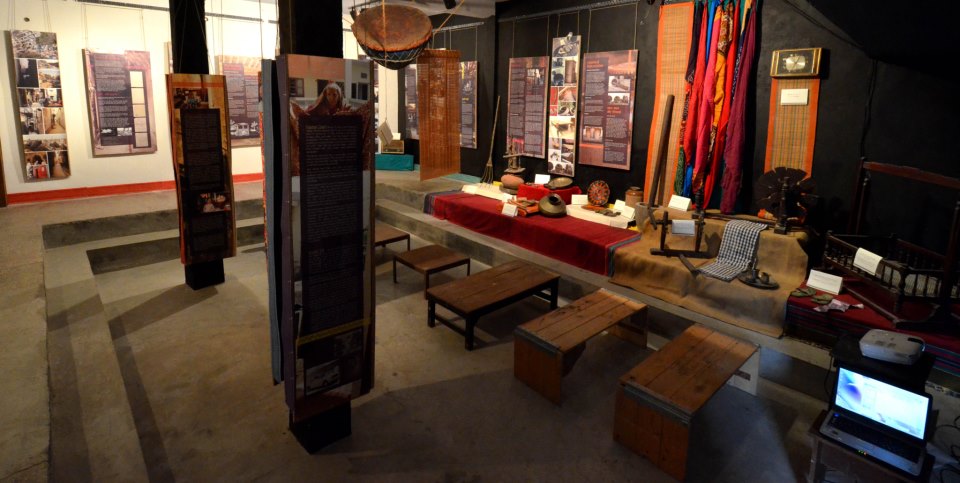Amita Bhaduri
Elitist Delhi scores low on environmental awareness
Posted on 23 Jun, 2013 08:18 AMEnvironmentalist Robert Swan, the first person to walk the North and South Pole, was in Delhi last year. He launched phase IV of Project Search, which aimed to promote environmental awareness and sustainable lifestyles among students. Swan noted that not many Delhiites scored highly on topics of environmental awareness.

Even climate change discriminates between women and men
Posted on 23 Jun, 2013 04:15 AMWe await a future that could be hotter and drier because of climate change. This is increasingly recognised as a global concern, and available data suggests that it is increasing the frequency and severity of weather-related hazards in South Asia.

Crop cultivation or construction - tough choice in Andhra Pradesh
Posted on 17 Jun, 2013 05:29 PMThe construction industry went through a boom in the 1990s due to more people demanding and affording houses. This put a lot of pressure on the Pennar area in Andhra Pradesh. Sandmining, which is the process of taking sand, became rampant at that time.

Experiences from a civil society initiative to restore stretches of toxic Yamuna: Report of a conference organised by PEACE, Thames River Restoration Trust and WWF India at New Delhi in March 2013
Posted on 16 Mar, 2013 09:12 PMDr Peter Spillet of the Thames River Restoration Trust shared that the Trust was the recipient of the 2010 Theiss International Riverprize funds on behalf of many organizations involved in the restoration work on river Thames in United Kingdom. He said that the Trust had shared the money for twinning projects in various countries including in India.
Accelerated Irrigation Benefits Programme given near-exclusive priority in 12th five year plan, but will it solve India’s water problems?
Posted on 16 Mar, 2013 09:04 PMThere is a palpable sense of a looming water crisis in India. Conflicts across competing users and uses are on the rise. In the irrigation sector, it is widely felt that “paucity of resources and poor performance of existing major and medium irrigation systems are the two main problems”(1).

Refugees of the Kosi embankments – A booklet by Dinesh Kumar Mishra
Posted on 13 Mar, 2013 02:44 PMKosi, one of the most vibrant rivers of North Bihar begins its journey at a height of about 7000 m in the Himalayan range. After entering the plains, the bed of the Kosi widens drastically and it spreads over 6 to 10 km.
Videos: Resurgence of the ahar pynes - Magadh Jal Jamaat helps revive 2000-year old flood water harvesting systems in Gaya, Bihar
Posted on 13 Feb, 2013 10:34 AMMagadh Jal Jamaat, a loose network of progressive individuals in Gaya has been successfully able to revive over a dozen abandoned water sources and have instilled in people the need to create, clean up and conserve several lakes and ponds in the region.
An exhibition at Studio Safdar in Shadi Khampur traces the history of the urban village and its water systems
Posted on 10 Feb, 2013 07:12 PMGuest post: Amita Bhaduri
West Delhi’s dusty neighbourhood, Shadi Khampur now has its own museum, in the traditional brick-and-mortar sense. I live nearby, have worked out of an office here and am familiar with the alleyways. But I got to know only now, what life in the neighbourhood was like. Its rich history and its connect to larger narratives from the past, like the series of land acquisitions in Delhi, the Emergency, and the anti-Sikh riots of 1984 which had gone largely undocumented and unarchived have been chronicled in the Neighbourhood Museum of Local History of Shadi Khampur, at Studio Safdar, a cafe cum bookstore.

Neighbourhood Museum at Studio Safdar
Source: Facebook page on “Public Art Project at Studio Safdar”
Ahar pynes, traditional flood water harvesting systems can help revive agriculture in south Bihar
Posted on 26 Jan, 2013 07:48 PMAhar pynes are traditional floodwater harvesting systems indigenous to South Bihar [1], and have been the most important source of irrigation in this region. Ahars are reservoirs with embankments on three sides and are built at the end of drainage lines such as rivulets or artificial works like pynes. Pynes are diversion channels led off from the river for irrigation purposes and for impounding water in the ahars. It is mostly to the credit of these that paddy cultivation has been possible in this otherwise relatively low rainfall area, when compared to North Bihar. The system attained its highest development in the district of Gaya [2].
This article provides an account of the ahar-pyne systems of South Bihar and the need to build organizational and institutional capacities of civil society and government agencies to undertake ahar pyne renovation and management.

Videos: Lovraj Kumar panel discussion focuses on the challenges to biodiversity conservation, livelihoods and ecological sustainability
Posted on 26 Jan, 2013 04:14 PMGuest post: Amita Bhaduri